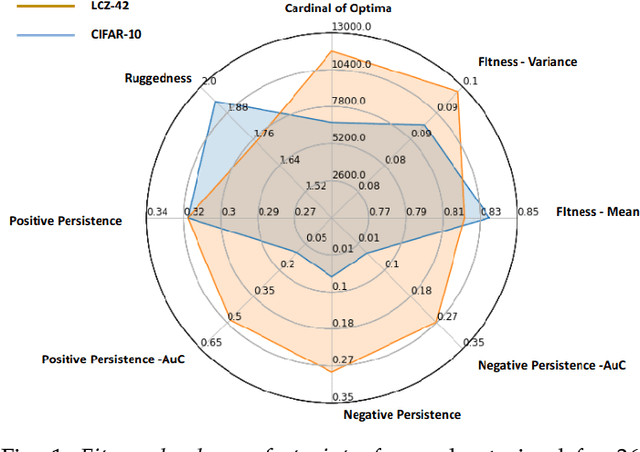Fitness Landscape Footprint: A Framework to Compare Neural Architecture Search Problems
Paper and Code
Nov 02, 2021



Neural architecture search is a promising area of research dedicated to automating the design of neural network models. This field is rapidly growing, with a surge of methodologies ranging from Bayesian optimization,neuroevoltion, to differentiable search, and applications in various contexts. However, despite all great advances, few studies have presented insights on the difficulty of the problem itself, thus the success (or fail) of these methodologies remains unexplained. In this sense, the field of optimization has developed methods that highlight key aspects to describe optimization problems. The fitness landscape analysis stands out when it comes to characterize reliably and quantitatively search algorithms. In this paper, we propose to use fitness landscape analysis to study a neural architecture search problem. Particularly, we introduce the fitness landscape footprint, an aggregation of eight (8)general-purpose metrics to synthesize the landscape of an architecture search problem. We studied two problems, the classical image classification benchmark CIFAR-10, and the Remote-Sensing problem So2Sat LCZ42. The results present a quantitative appraisal of the problems, allowing to characterize the relative difficulty and other characteristics, such as the ruggedness or the persistence, that helps to tailor a search strategy to the problem. Also, the footprint is a tool that enables the comparison of multiple problems.
 Add to Chrome
Add to Chrome Add to Firefox
Add to Firefox Add to Edge
Add to Edge